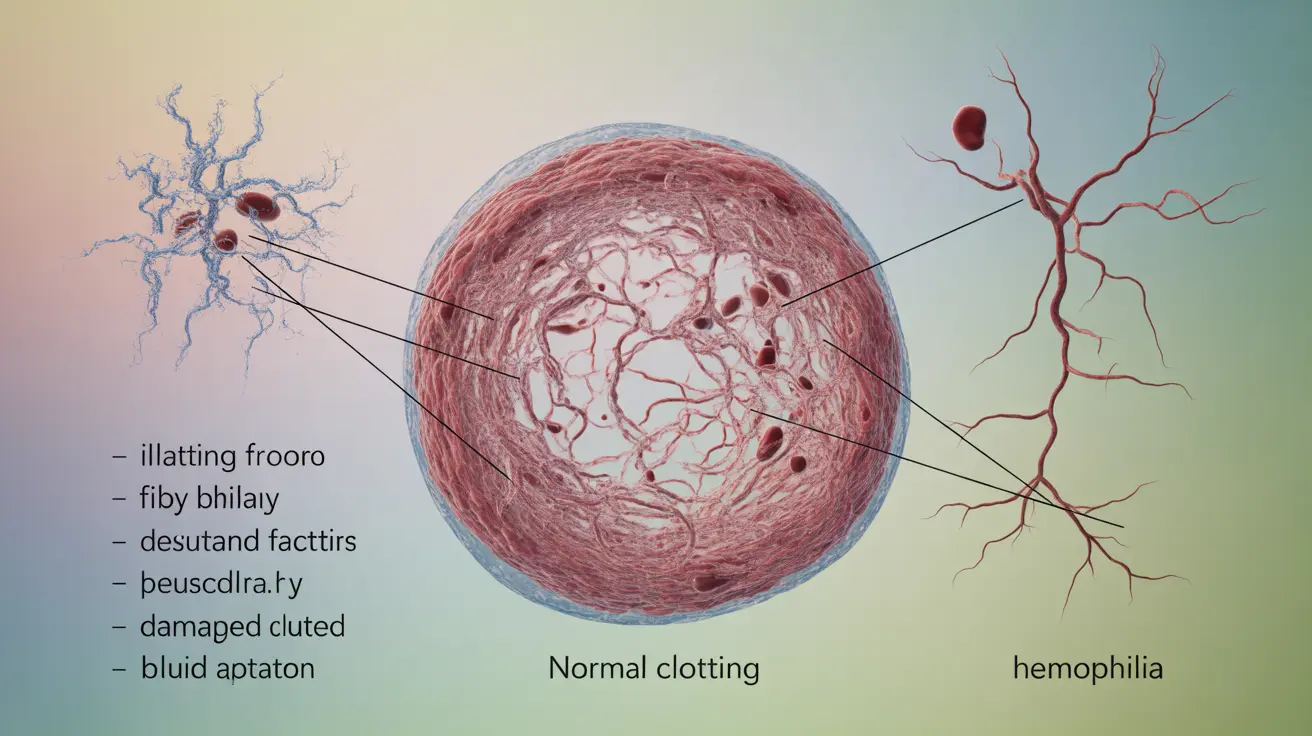Living with hemophilia presents unique challenges, particularly when it comes to bruising. This inherited bleeding disorder affects the body's ability to form blood clots properly, making individuals more susceptible to bruising and prolonged bleeding episodes. Understanding how to manage and treat hemophilia-related bruising is crucial for both patients and caregivers.
In this comprehensive guide, we'll explore why hemophilia causes excessive bruising, how to effectively manage these bruises, and when to seek medical attention. We'll also discuss available treatments and prevention strategies to help maintain a better quality of life.
Understanding Hemophilia and Bruising
In people with hemophilia, the blood lacks sufficient clotting factors, proteins that help form blood clots to stop bleeding. This deficiency means that even minor bumps or injuries can result in significant bruising, and these bruises often take longer to heal compared to those in people without the condition.
The bruises that develop in hemophilia patients may be:
- Larger than expected for the injury
- More painful than typical bruises
- Deeper in color
- Slower to heal
- Accompanied by swelling
Identifying Serious Bruising Complications
While some bruising is expected with hemophilia, certain signs warrant immediate medical attention:
- Bruises that continue to grow in size
- Severe pain or pressure in the bruised area
- Bruising near vital organs or joints
- Signs of nerve compression
- Difficulty moving a limb
- Bruising accompanied by headache or vision changes
Managing Hemophilia Bruises at Home
Proper home care can help manage hemophilia-related bruising effectively. The RICE method is particularly helpful:
- Rest the affected area
- Ice the bruise to reduce swelling
- Compress the area gently
- Elevate the bruised body part
Additionally, following your healthcare provider's prescribed treatment plan, including factor replacement therapy when necessary, is essential for proper bruise management.
Prevention Strategies
While completely preventing bruises isn't possible, several strategies can help reduce their occurrence:
- Wearing appropriate protective gear during activities
- Maintaining a safe environment by removing hazards
- Strengthening muscles through approved exercises
- Following medication schedules precisely
- Regular check-ups with your healthcare team
Treatment Options
Modern medicine offers several treatment approaches for managing hemophilia and reducing bruising episodes:
- Factor replacement therapy
- Prophylactic treatment
- Clotting factor concentrates
- Gene therapy (in some cases)
- Physical therapy for joint protection
Frequently Asked Questions
Why do people with hemophilia bruise so easily and why do their bruises last longer?
People with hemophilia bruise easily because their blood lacks sufficient clotting factors to form stable blood clots. Without proper clotting, even minor trauma can cause blood to collect under the skin, forming larger bruises. These bruises last longer because the body takes more time to reabsorb the accumulated blood without normal clotting mechanisms.
What are the best ways to treat and manage bruises caused by hemophilia at home?
The most effective home treatment includes the RICE method (Rest, Ice, Compression, Elevation), following prescribed factor replacement therapy, and avoiding activities that might worsen the bruise. Always consult with your healthcare team about specific home management strategies for your condition.
How can I tell if a bruise in someone with hemophilia needs urgent medical attention?
Seek immediate medical care if the bruise continues to grow, causes severe pain, affects mobility, or occurs near vital organs or joints. Other warning signs include signs of nerve compression, unusual swelling, or bruising accompanied by headaches or vision changes.
What treatments are available to help reduce bruising and bleeding episodes in hemophilia?
Available treatments include factor replacement therapy, prophylactic treatment to prevent bleeding episodes, clotting factor concentrates, and in some cases, gene therapy. The specific treatment plan depends on the type and severity of hemophilia and individual patient factors.
How can people with hemophilia prevent bruises and serious bleeding complications in daily life?
Prevention strategies include wearing protective gear during activities, creating a safe living environment, maintaining regular exercise approved by healthcare providers, adhering to medication schedules, and attending regular medical check-ups. It's also important to avoid high-risk activities that could lead to injury.




